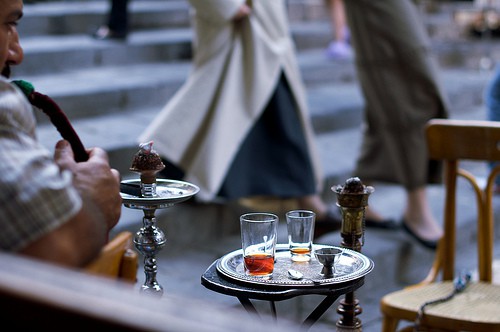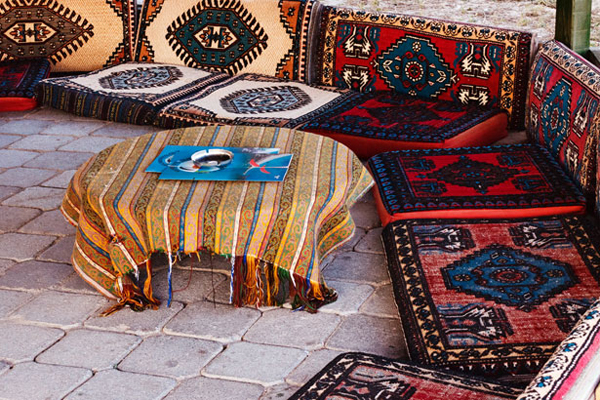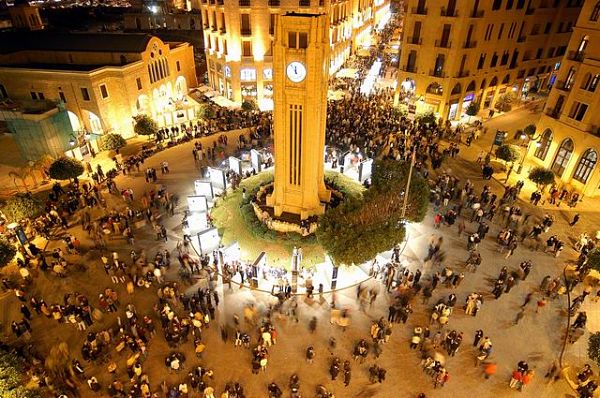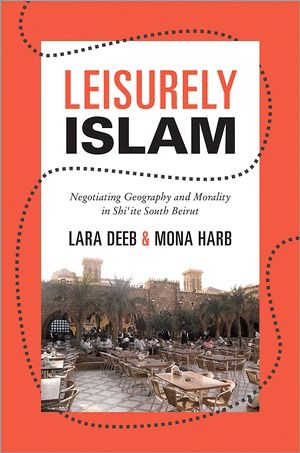Leisurely Islam seeks to offer a different perspective on youth culture in the Middle East. In their book on the burgeoning café culture of Dahiya, a Shi’a neighborhood in South Beirut, Mona Harb and Lara Deeb explore the ways in which Dahiya’s youth negotiate their multiple allegiances and identities: as young adults, “more or less pious” believers, consumers, students, workers, citizens, and so on. Critical to their project is broadening the world’s vision of Dahiya as an impoverished, politically and socially conservative Hizbullah-stronghold. In contrast to this vision, Harb and Deeb’s Dahiya is a complex and shifting space whose inhabitants defy such simple characterizations. By focusing specifically on emergent spaces of socialization in Dahiya, the authors show just how rich and complex this seemingly homogenous community really is. Furthermore, their emphasis on morality (especially as opposed to piety) allows for a nuanced and at times deeply personal analysis of the ways in which the youth of Dahiya deal with shifting moral standards of behavior.
The authors do a particularly nice job of situating their analyses within the historical context of contemporary Lebanon. For readers such as myself who may not be experts in Lebanese history, their explanation of the recent changes in Lebanese politics (e.g. the rise of Hizbullah and increasing sectarian divides) provided essential background to understanding the political, social, religious, and geographic factors at play in Beirut. This historicization is also crucial to explain the rapid proliferation of café culture in Dahiya, which the authors credit in part to the growing presence of “a robust Shi’i middle class that demanded places for leisure in their neighborhoods” (50) following the unrest of the late 2000s. As political and sectarian divisions grew, the Shi’a of Dahiya looked within their neighborhood to satisfy their leisure needs and desires. As these new spaces for socialization emerged, the geographic and ideological boundaries between North and South Beirut also shifted, which is precisely how the authors arrived at this topic.
Thus, Harb and Deeb’s investigation into café culture is rooted in broader questions about the changing moral and geographic landscape of Dahiya. The authors explore what they see in major shifts around norms of leisure in the neighborhood over the past two decades, most notable in the tremendous rise in popularity and prevalence of cafés in the area from the 2000s onward. In particular, they are concerned with how consumption — and consumer choice — is tied to identity among the Shi’a of South Beirut. The authors ask, what influences Shi’i youth from Dahiya to engage in certain leisure activities, and in certain spaces? How do these young men and women reconcile social and religious beliefs with these choices? Are they necessarily at odds? The authors do not arrive at a simple answer, instead focusing on the great flexibility with which the youths of Dahiya negotiate different and sometimes conflicting beliefs, norms, and desires in these café spaces.
In this way, the authors’ analysis touches upon both structure and agency. On a structural level, Harb and Deeb connect the leisure choices of Dahiya’s youth to what they term the “class-sect nexus” in contemporary Lebanese society (210-220). As they explain, consumer choice tells us a great deal about the social and political landscape of Dahiya, especially vis-à-vis other areas of Beirut. As the authors point out in their final chapter, taste and ideas about class influence these decisions about leisure in powerful and overt ways. As an example, they discuss the perception among Beirutis (both from within and outside of Dahiya) that residents of South Beirut are largely poor, uneducated, extremely pious, and politically conservative. These beliefs translate directly to perceptions of the quality of Dahiya’s cafés, which many describe as lacking the refinement of establishments in wealthier neighborhoods of Beirut such as Hamra and Gemmayzeh. Specifically, the characterization of a place as “so Dahiya” typically entails commentary on the quality of the food, the aesthetics of the business, its clientele and overall atmosphere. These establishments are thought to be more “authentically” Arab or “Eastern” than similar cafés in other parts of the city.
Depending on one’s viewpoint, this characterization is either a drawback or an asset. For upper-class Christian and Sunni Lebanese, for example, the cafés embrace of both Lebanese heritage and a more “global” aesthetic stands in stark contrast to the bourgeois French style preferred by these populations and thus connotes poor taste.
Yet, Harb and Deeb noticed that customers from outside of Dahiya tended to rate the quality of food higher than those from the neighborhood, arguably because of the former group’s belief that Dahiya offers a more traditionally Lebanese environment, and thus, more “authentic” cuisine than cafés in other neighborhoods. For others, including youth native to Dahiya and political Leftists, the “eclecticism” (211) of these businesses holds great appeal: “Dahiya has a particular allure, weaving together ideas about a space of resistance to Western imperialism with notions about authenticity in Eastern or Arab style. Dahiya is assumed to be less corrupted by colonial European and US global-corporate cultural forms” (215). Ironically, Harb and Deeb attribute the cafés’ rejection of traditionally Eurocentric styles in favor of “global” and “traditional” décor to the experiences of the café owners, many of whom mentioned experiences abroad (in particular, in the U.S.) as shaping their tastes and aesthetic styles.
Yet, Deeb and Harb are careful not to reduce leisure patterns to structure alone. Through extensive interviews with young men and women in this neighborhood, the authors explore the significance of individual choice and its connection to morality in determining these patterns. They represent the youth of Dahiya as largely self-aware of the nuances of their choices, which are made “with conscious and conscientious reflection” (216). As they explain, “the desire to choose the best path is not merely a desire to make one’s life easier; rather, it is a desire to choose the path that will lead to the most moral result, taking into consideration both religious tenets and social values” (151).
In general, the young men and women of Dahiya tended to show “greater flexibility toward the religious rubric for morality” (147) than older generations. However, the authors are careful to distinguish morality from piety, as they see multiple influences shaping the youths’ decision-making, ranging from family pressures to religious beliefs, questions of geography and personal taste and so on. As this book deals explicitly with public spaces for socialization, the authors found considerable variance in terms of the behaviors the youth deem “appropriate” in public versus private spaces. For example, in one interview, a young restaurant manager named Riyadh defended his decision to listen to music in his car in the wake of criticism. For him and many others interviewed in the book, questions of morality and decency and appropriateness are highly contextual: acceptable behavior in a private setting or while alone does not always nor necessarily correspond to acceptable behavior in public spaces such as cafés.
This very notion of the public/private divide undergirds many of the youths’ complaints about Hizbullah, which they describe as overly involved in policing the activities and choices of Dahiya’s citizens. As the authors explain, Hizbullah has worked actively to transform its identity from a radical fringe group to an integral participant in national politics over the past two decades. One of the ways that the party has managed this transformation is through investments in cultural and leisure spaces and activities, using these investments to cultivate a new identity and in so doing to reaffirm its moral and ideological control in Dahiya: “This focus on promoting appropriate values within its community is a symptom of Hizbullah’s anxieties that while it remains the most popular political choice for Shi’i Muslims in Lebanon and the core of the Resistance, it may be losing ground as the primary moral authority for its supporters” (98).
Importantly, the youths’ critique of Hizbullah focuses on its inflexibility and hypocrisy: Hizbullah’s attempts to control this zone of socialization are problematic, the book argues, given the importance of compromise and individual choice in these young people’s lives. Whereas Hizbullah prioritises its own specific interpretation of piety and faithfulness, the authors show that the youth of Dahiya are beginning to question these interpretations. This shift is symbolic of broader changes in Dahiya: rather than relying on rubrics of morality laid out by religious leaders and/or political organizations alone, Dahiya’s youth determine the morality of their life choices on the basis of diverse influences.
Overall, Leisurely Islam was a powerful, important, and well-researched text, the significance of which extends far beyond the realm of leisure. I attribute a great deal of the book’s success to its multidisciplinary approach. The book doesn’t neatly fall within the discipline of either author but instead draws upon the expertise of both. Perhaps more importantly, the book nicely integrates multiple forms of data, from religious texts; ethnographic data (both detailed observations and interviews); and market research (on cafés in Dahiya, size, location, etc.); to urban spatial analysis and so on. Brought together in a masterful way, this cornucopia of data enables the authors to paint a richer picture of Dahiya than would have been possible using any one methodology or data source alone.









